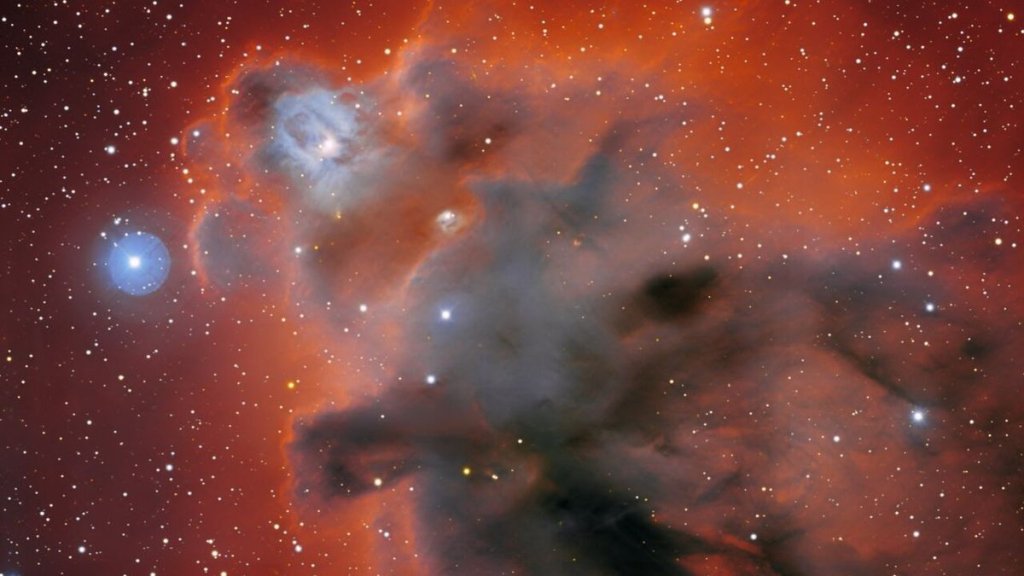
How exotic alien life could thrive in the giant molecular clouds of deep space (Image Credit: Space.com)
An astronomer has outlined a way for methane-producing life to thrive in the molecular clouds of deep space, opening up a new pathway to understanding the potential origins and diversity of life.
Space is hostile to life. There’s no abundant air. All of the water is frozen. Everything’s all spread out. And there’s deadly radiation bombarding everything. There’s no way that life as we know it could find a habitable home in the depths of interstellar space.
Sure, a bacterium or even something more sophisticated, like a tardigrade, might be able to enter into a hibernation state and weather the ravages of deep space. But at best, that would only allow that organism to transit through space on its way to some more clement location.
Related: Extreme microbes in salty Arctic water could aid search for life on Mars
But life is surprisingly robust and inventive. We have detected microorganisms in some of the most hostile environments on Earth: buried under Antarctic ice sheets; deep underground, far from the light of the sun; lofting through the upper atmosphere; thriving in superheated vents; and more.
Life has managed to find every possible niche on Earth, and the most inventive life-forms are probably archaea. These single-celled organisms, which sit somewhere between bacteria and eukaryotes, are the jacks-of-all-trades among Earth’s life.
In fact, archaea come in so many diverse forms that we’ve only begun identifying and categorizing them, as many species push the boundaries of life so much that we have a hard time spotting them. Archaea have been found using almost every possible energy source available on Earth, including sugars, ammonia, carbon metals and sunlight.
This means that, if we want to look for exotic forms of alien life, we should turn to archaea for inspiration. And according to Lei Feng, an astronomer at the Purple Mountain Observatory and the University of Science and Technology of China, we should especially look at the ability of some archaea to use methane as a source of energy.
Writing in an article yet to be peer-reviewed, Feng outlines how archaea-like organisms might thrive in one of the most unlikely places in the galaxy: giant molecular clouds.
Molecular clouds are huge complexes of gas stretching over 100 light-years across. They are typically cool, with temperatures only 10 to 100 degrees above absolute zero. Most importantly, they are the birthplaces of stars; when pieces of a cloud destabilize and gravitationally collapse, they can rapidly form a new batch of stars. Some of those stars then die, enriching the cloud with heavy elements — like methane.
Sitting light-years from the warmth of a star, hypothetical life in a molecular cloud could not use photosynthesis as a source of energy. And free oxygen is not abundant, so the energy pathways available to humans wouldn’t work, either. But there’s another source of energy that uses methane. On Earth, some archaea combine carbon dioxide with hydrogen to generate methane and water, which is a chemical reaction that releases energy.
Molecular clouds feature abundant reserves of carbon dioxide. And if that weren’t enough, any living creatures could also use carbon monoxide in a similar reaction, or turn to acetylene. This means there are several plausible chemical pathways a hypothetical methane-based life-form could use to generate energy.
But would there be enough raw materials to sustain life? This is the million-dollar question and the subject of Feng’s paper. Feng took the proportions of all the ingredients in a typical molecular cloud to examine how much energy would be available and found that it was over five times the amount needed to sustain basic methane-based life.
We currently do not know if life could maintain these chemical reactions at the extremely low temperatures found within molecular clouds. But Feng proposed a way to test this radical idea. The presence of abundant life within a cloud would dramatically alter the cloud’s chemical balance, just as the presence of life on Earth changes the chemistry of the atmosphere. If we spot a molecular cloud with an exceptional amount of methane, we might just be observing a home for life.
This work has important implications for our understanding of the origins of life. If life can arise on its own outside a planetary environment, this would bolster the case for panspermia, the idea that life pervades the universe and seeds itself in newly born planets.





